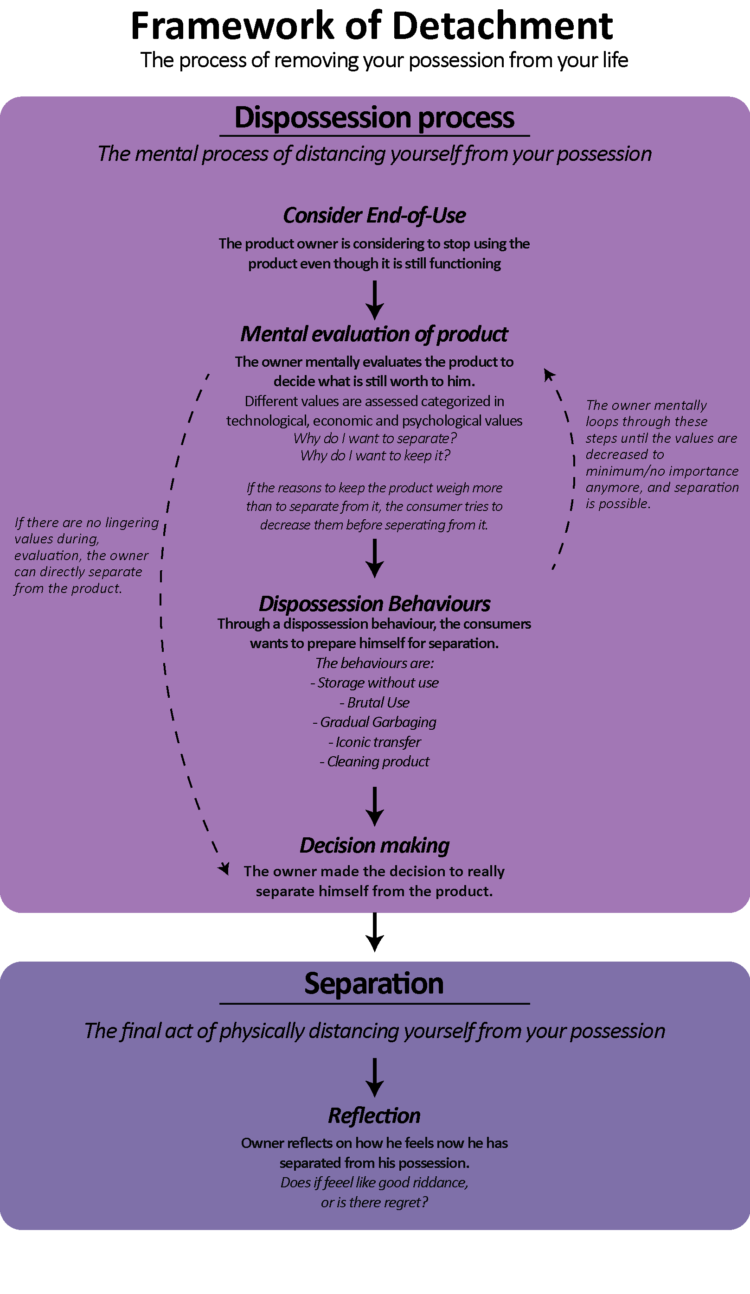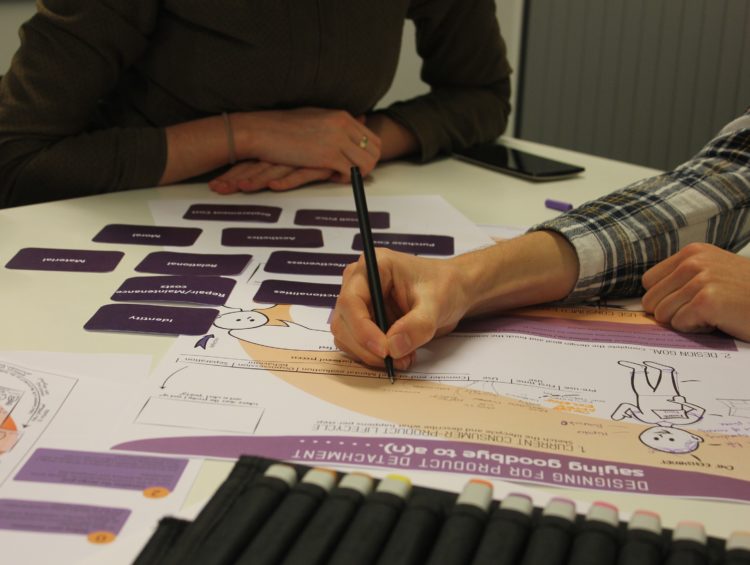Creating a Design Tool: Designing for the End-of-Use Consumer Experience in a Circular Economy
Mar 2018 - ongoing
The closing experience of the consumer-product relationship has to receive more attention by designers, and the outcome of this project will support designers in understanding and designing for the end-of-use experience.
By Hanna Timmerman
The consumer-product experience consists of four main phases: pre-use, starting, use, and closing (figure 1). The first three receive much attention from researchers and designers, resulting in tailored and positive experiences in these phases. Consumers are guided and stimulated to buy and use a product. The closing experience, on the contrary, has not received that same amount of attention and is disregarded or is denied altogether by companies and designers (Macleod, 2017). The consequence of this lack of interest by companies is that there are indifferent or even negative closing experiences.

By recognizing the end-of-use phase and closing experience, designers can try to design experiences that will be beneficial for a circular economy. Through designed end-of-use experiences designers can manage their products at the end-of-use and eventually control where they will end up. This would be beneficial for circular products that need to be returned to the loop after use.
A theoretical framework of detachment is developed that shows the process of consumers when wanting to detach themselves from their possession (figure 2). This framework is based on the works of Roster (2001) and Türe (2014). The detachment process consists of two parts: (1) dispossession, which is the mental process of distancing yourself from the product, and (2) separation, which is the physical act of removing the product from your life.

During the dispossession process, the consumer evaluates the product on what it is still worth to him and shows a dispossession behaviour to enable himself for physical separation (figure 3).

To be able to design for the end-of-use experience, designers need to comprehend the detachment process, the consequences of the dispossession behaviours and need to be able to apply this knowledge into designing an end-of-use experience.
The developed design tool enables design students to analyse the detachment process with the use of the consumer-product lifecycle (figure 4), and recognize where opportunities lie for an end-of-use experience by reflecting on the lifecycle and defining a design goal, concluding the analysis.

The tool will be used in a workshop context, where the students are introduced to the concept of detachment and the consumer experiences at the end-of-use. They are supported to find opportunities for which they could design a new end-of-use experience that stimulates their consumer to keep their product in the circular loop (figure 5).

References
Macleod, J (2017), Ends. Why we overlook endings for humans, products, services and digital. And why we shouldn’t.
Roster, C. A. (2001). Letting go: the process and meaning of dispossession in the lives of consumers. ACR North American Advances.
Türe, M. (2014). Value-in-disposition: Exploring how consumers derive value from disposition of possessions. Marketing Theory, 14(1), 53-72.
Supervisory Team
Prof. dr. ir Jo van Engelen – Chair
Prof. dr. ir. Conny Bakker – Mentor
Ir. Flora Poppelaars – Client Mentor